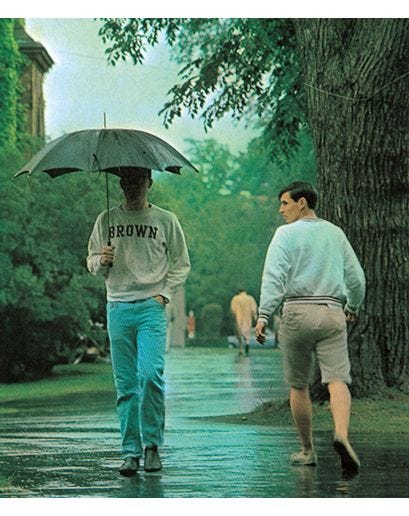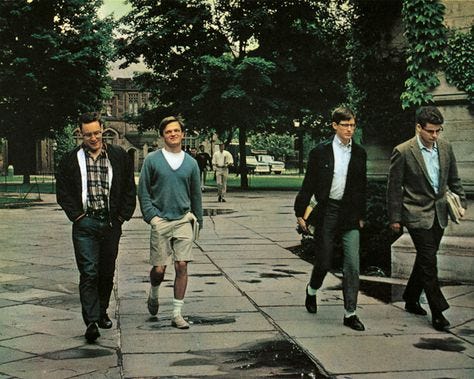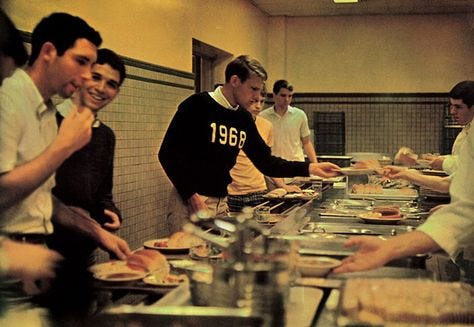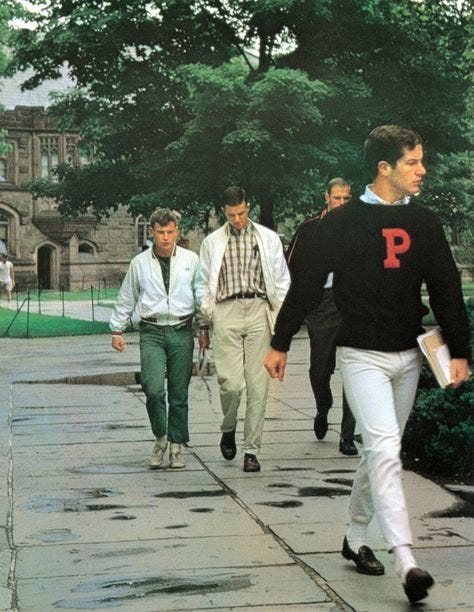Take Ivy: The Japanese Lens That Preserved an American Classic
The Book That Turned Ivy League Style into a Global Obsession
You ever see a book that’s been sitting on your wishlist for years, taunting you? That was me with Take Ivy. I don’t even know why it took me so long to buy it. Maybe I was waiting for the right moment, like it was some kind of style holy grail I needed to earn. But this year, I caved. And let me tell you, it did not disappoint.
Take Ivy is pure magic. Imagine a time when people didn’t just throw on sweatpants to grab coffee. These guys were out here in loafers and blazers on the regular. Not because it was a special occasion, but because it was Tuesday. And the fits? They’re the kind of looks that make you stop mid-page, point, and say, “Why don’t we dress like this anymore?”
But this book isn’t just a fashion flex—it’s a cultural milestone, made even more intriguing by its Japanese perspective.
The Japanese Blueprint for Ivy League Perfection
Let’s back up. Take Ivy was created in the 1960s by a group of Japanese creatives—Teruyoshi Hayashida, Shosuke Ishizu, and a few others—who were absolutely obsessed with the Ivy League aesthetic. At the time, Japan was soaking up Western culture like a sponge. But instead of going full Elvis or rockabilly, they zoomed in on Ivy League students. Why? Because their style was polished but not pretentious, cool but not try-hard.
So, these guys traveled to the U.S., cameras in hand, and documented what they saw. The result is a book that’s less about words and more about capturing a vibe. Ivy League students strolling to class in perfectly tailored chinos, casually reading on campus lawns, or tossing a football in their Sperrys. Take Ivy is like people-watching at its finest.
And here’s the kicker: Japan didn’t just admire Ivy style—they straight-up perfected it. They studied it like scientists: the exact roll of a shirt sleeve, the ideal length of a tie, the precise shade of khaki. And today, you can see the results in their vintage stores. Tokyo alone has some of the best curated Ivy League fashion you’ll ever find. America might have started the fire, but Japan’s been keeping it alive.
What Makes Take Ivy Iconic?
This isn’t a book for people who want paragraphs of text telling them why something’s important. Nah, Take Ivy just shows you. It’s all about the details: the crisp lines of an oxford shirt, the subtle swagger of a cuffed chino, the laid-back cool of a cardigan draped over the shoulders. It’s effortless. No big logos, no flashy trends—just style that speaks for itself.
It also feels incredibly real. These aren’t staged photos. The guys in this book weren’t trying to be influencers (because, you know, it was the 1960s). They just were. It’s candid, it’s authentic, and it’s timeless.
Why Should You Care?
Here’s the thing: Ivy League style isn’t just “old-school preppy.” It’s the foundation of so much of what we consider classic menswear today. Loafers? Thank Ivy League students. Button-downs? Thank Ivy League students. The casual blazer you throw over a t-shirt to look cool? You guessed it.
And here’s where it gets even more interesting: Japan’s obsession with this aesthetic didn’t just preserve it—it elevated it. Walk into a vintage shop in Tokyo, and you’ll find Ivy League pieces that look like they came straight off the pages of Take Ivy. They’ve taken our history, respected it, and turned it into something extraordinary.
Meanwhile, back in the States, most people are still out here in sweatpants. (Not judging, but also… kinda judging.)
Bringing It Back to Today
What makes Take Ivy hit so hard is how relevant it still feels. Ivy League style has made a quiet comeback in the past few years—loafers are trending again, high-waisted chinos are back, and brands like Rowing Blazers are giving preppy a modern edge. But even with all that, the original Take Ivy aesthetic remains unmatched.
So, if you’re someone who loves fashion, culture, or just a damn good lookbook, do yourself a favor and pick up Take Ivy. It’s not just a book; it’s a time machine to an era when people dressed with intention—and it’ll make you rethink what’s in your closet.
Trust me, once you see these fits, you’ll be slipping on loafers and wondering why you ever wore anything else.










It’s so hard to believe these aren’t photo shoots. Amazing.
If we want to be excellent we have to start dressing excellent